Before I met artist Angie Waller, the Internet wasn’t a source for art, but more an outlet to indulge personal vices. Since meeting Angie in the Bronx Museum’s Artist in the Marketplace (AIM) program four years ago, my ideas about what art can be and how it can be made, have changed, and for the better. Angie uses data mining techniques to identify patterns and create stories that evaluate the mundane stirrings of contemporary life, often to devastating effect. She works in a variety of formats, including books, videos, Web sites, and installations. When I think about Angie’s work, Henry David Thoreau comes to mind, specifically the line he wrote in his book Walden: “The mass of men lead lives of quiet desperation.” In December 2012, Angie’s is teaming up with Present Company in Williamsburg to participate in a pop-up shop, which offers limited editions by Angie, and other artists called Pretty Conceptual. Our interview discusses Angie’s decision to make openly sourced work that cannot be collected, and how she negotiates the dynamic between cost and labor without sacrificing creativity.
BC: When I asked you to participate in this guest blog series, you replied: “I prefer to make web art, books, and videos that are openly distributed, rather than art objects that are collected. In practice, this means I don’t make a living off my art, and I feel removed from the art market.” This is of interest to me, and yes, I want to know why you prefer to make web art, books, and videos that are openly distributed instead of art objects.”
AW: I prefer web art, books, and video because of the process, content, and audience. I started out making videos from found footage rather than shooting footage myself. My process grew to involve data mining and incorporate found text, which works well with books, web projects, and videos. I’ve always been interested in excavating meaning from things I find rather than creating meaning from scratch. I’m reluctant to claim ownership over the materials that I appropriate. Plus, a lot of my themes are of interest to non-art world audiences. It has always made more sense to make my work accessible or downloadable to a wide audience online. My work isn’t complete until people can see it or interact with it.
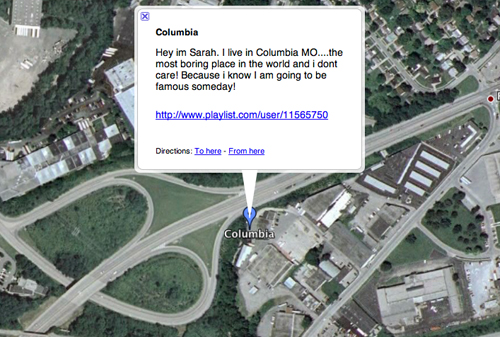
Angie Waller. "The Most Boring Places in the World," 2010. Google Earth tour. Technical Data: Google search query: “the most boring place in the world.” Posts collected from January 10 – May 1, 2009. 55 entries, 52 unique locations to date. Courtesy the artist.
BC: Data mining and appropriation is cost-efficient, but labor intensive, and requires a specific skill set. How do you strike a balance between the two?
AW: It is labor intensive, but has also been a skill that is applicable to my career and income as a designer. In that way, the labor has been an investment.
BC: To clarify, you do not earn income from openly distributed web art, books, and videos. Is that correct?
AW: I do not earn an income from making work. I receive some support through residencies, contributing to publications or selling editions. I am happy if I come close to breaking even.
BC: I’m like you. If I come close to breaking even, that’s cool. As artists, we do not even have to break even. We just have to “come close to breaking even.” What’s that about? Don’t we deserve to stay in boutique hotels?
AW: I do think artists making work for an exhibition deserve support. I don’t expect a boutique hotel, but I have started turning down opportunities that do not lend support for producing or installing the work. I think with experience, we start to know the difference between being exploited and being supported.
BC: How do you strike a balance between the cost of stuff and the work in the studio?
AW: My work is not that expensive to make and mostly costs me time. I think I feel more deprived of time than money. But time equals money, so in that sense, lack of funds compromises my work getting completed as efficiently as I would like. I don’t feel that my ideas get compromised in this sense. They do risk not being completed.
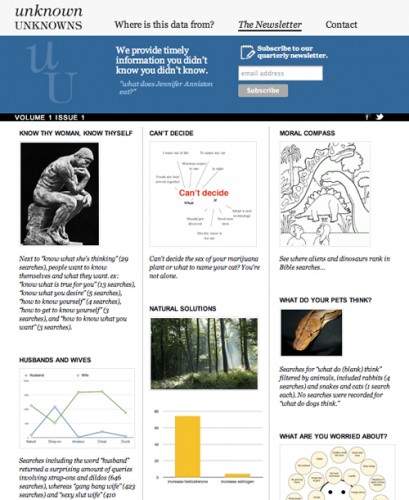
Angie Waller. "Unknown Unknowns," 2012-ongoing, website and quarterly newsletter. Courtesy the artist.
BC: Your ideas have not been sacrificed by a lack of funding, but your work, on occasion, has been compromised. Can you cite an example of a project that you were not able to see through because of a lack of funds? If you were not able to complete this project, did this cause you to modify your working methods?
AW: Growing up, I had a friend who really liked Rob Lowe. She had a poster of Chad Lowe, the lesser-known younger brother on her wall, because he seemed more attainable to a freckly, suburban teenage girl. I am always doing design work for clients with a budget in mind and I think this naturally carries over into my art practice. I tackle my work in stages, and experiment to see if an idea is promising before I apply my own resources or seek outside funding.
For example, this could mean making manual prototypes that would be more efficient if I hired a programmer to help me. I also think posting work online as a way to see how an idea is received allows me to decide if my financial investment in advanced production will be worthwhile. I don’t always let that dictate the ideas I pursue, but getting audiences involved early on is helpful to my work. Real world limitations keep me focused. Why daydream about Rob Lowe?
I have been working on a game show performance that involves a touring show and small set design. I need funding before I can see it fully realized. In the meantime, I have been collecting the data I need for the game and feeding it into a quarterly newsletter called “Unknown Unknowns.” The newsletter is a separate piece, but it is helping me to figure out how the game will work when I eventually do secure funding. It is also a way to generate interest among potential audiences before the tour takes to the road. Funding takes time, and I try to find ways to keep working on a small scale while keeping my fingers crossed.
BC: How do you manage your money, and how do you earn income? I want to know how economics, and money-management, affects your decisions inside and outside the studio.
AW: When I started undergraduate courses in Austin, my advisor asked me if I wanted to be in the Design or Fine Art track. I didn’t know the difference (I was 17) and asked her to distinguish the categories. She just asked, “Does your family have money, like a trust?” I replied “no.” She suggested I study design.
Once I figured out the difference, I stuck with art, but design has been my way of earning income and compliments my art practice. Currently I work on designing interfaces with a company that developed open source software for public archive management. It’s great. It compliments my interests in data and documentary, my employer is supportive of my art practice, and I know deadlines well in advance since archives move pretty slowly. The latter makes it possible to plan ahead when shows or other deadlines in my studio come up.
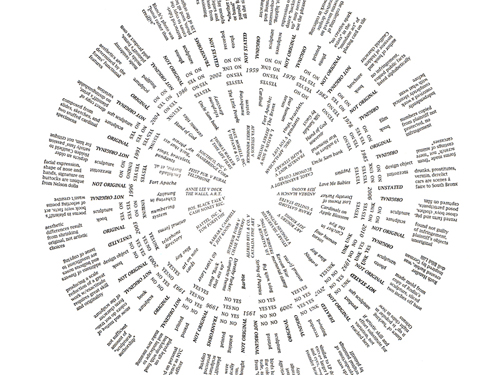
Angie Waller. "Originality Compass," 2010. 12″ x 15.″ Letterpress print, edition 65. Courtesy the artist.
BC: Have you always known that you were going to work a day job to support your art? Or, did you come to this realization at a certain point in your career as an artist (and if so, what was that point)?
AW: The job provides financial resources that I devote to my work, but it also takes time away from making my work. This tradeoff seems unavoidable. More importantly, it is the first job where I am not hiding my identity as an artist. In the past, I have kept the two separate. I don’t see the design work I do for clients as part of my art practice, but the cataloguing and library science aspects of my job have been helpful in developing some of my recent artwork. So, in a way, they aren’t separate. I always knew that financial stability was important to me and that I would need a job of some sort to feel comfortable. I haven’t been a huge risk-taker in that respect. I admire people who are able to focus on art while sacrificing financial stability.
BC: If you seek monetary compensation as an artist, do you see it as a possible compromise to the type of work you create, and your integrity as an artist?
AW: I sometimes create work that is explicitly critical of money-making ventures. I would expect monetary compensation to compromise the work. But I did produce a video documentary piece on armored car companies, and was pleasantly surprised when I was paid to rework it as a print piece in the Baffler magazine. I think my integrity was actually rewarded in that case.
I try to keep plans of future monetary compensation out of my practice. I have to keep objectives simple for myself. Otherwise, the work will grow muddled. I have a project coming up in December at a space called Present Company in Williamsburg. It will be a pop-up shop of limited editions by me and other artists called “Pretty Conceptual.” The definition of the word “pretty” is flexible. Perhaps making good and mediocre conceptual ideas more product-like will allow me to see my regular practice in a new way. Or maybe I will be the next Gap! Is that integrity?
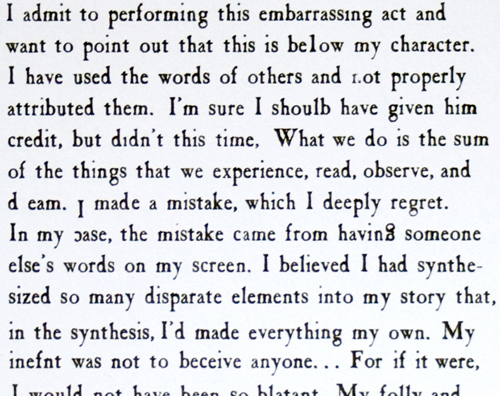
Angie Waller. "I'm Sorry," 2011. 4.5″ x 8.75″. Edition 35 book, hand set type, stitch binding. Courtesy of the artist.
BC: Do you work to support your art, or does your art support you?
AW: I work to support my art. When my plate-maker asked if I was an artist, I told him that I lose money making art. He replied that he loses his money buying guns. I’ve quit framing it that way since my encounter with him.
BC: As an artist, how do you monetize your time, and how do you assign a monetary value to your studio practice?
AW: When I compose grant applications, I include my time as a percentage of the budget, especially since I do not use expensive materials.
BC: How much time do you set as a percentage of the budget?
AW: About 15%. I’m not sure that all grant funders see this as a valid budget item.
BC: According to the 2010 W.A.G.E. Survey (Working Artists for the Greater Economy), nearly 60% of artists that exhibited their work in cultural institutions did not receive any form of payment, compensation or reimbursement. It’s as if the art world expects artists to work for free. What other profession expects this of its workers, to give services away for free? Despite lack of remuneration, many artists agreed to the offer. Why?
AW: Unfortunately, it’s not unlike the rise of unpaid internships. It reflects what we value as a society. I think artists work for free because there is a lot of competition for exposure. Emerging artists are starving for audiences and undervalue their worth. As long as artists accept this, it is difficult to fight. Personally, I cannot accept any more opportunities that do not offer support. After doing that a few times, I realized I gained all I could from this level of limited support. Arts organizations should always make room to compensate their staff and artists first and foremost. Many do. If an organization can only afford rent, artists should be warned in advance of participating. I had an experience with a small organization that offered a very modest subsidy for production expenses, and then apologized for lack of funds a week before the show opened. I’m trying to be more careful moving forward.
BC: Have you purchased the artwork of another artist? How did your financial investment in another artist’s artwork influence or inform your practice?
AW: Yes I have. I think it has been a good exercise to attach monetary value to art. Somehow I don’t question it when I am in the position to purchase. Supporting an artist’s practice is a positive way to spend money, it doesn’t feel ephemeral like other types of spending. I just spent $70 on printer ink, that feels really dumb.

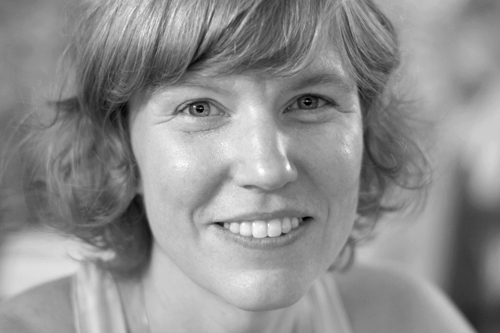
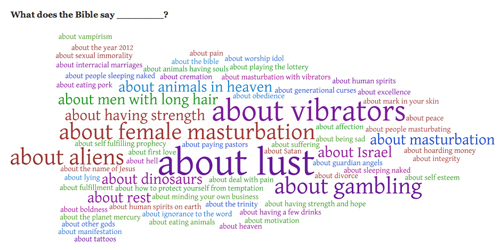



Pingback: Guest Blogger @ Art:21 « HE SAID SHE SAID